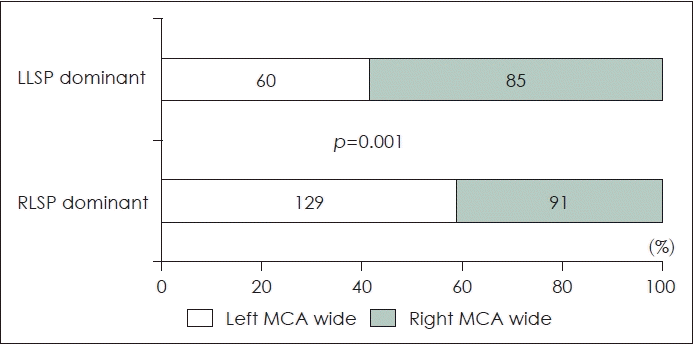1. Roffwarg HP, Muzio JN, Dement WC. Ontogenetic development of the human sleep-dream cycle. Science. 1966; 152(3722):604–19.
2. Arias MA, Sánchez AM. Obstructive sleep apnea and its relationship to cardiac arrhythmias. J Cardiovasc Electrophysiol. 2007; 18(9):1006–14.
3. Narkiewicz K, Wolf J, Lopez-Jimenez F, Somers VK. Obstructive sleep apnea and hypertension. Curr Cardiol Rep. 2005; 7(6):435–40.
4. Ozeke O, Erturk O, Gungor M, Hızel SB, Aydın D, Celenk MK, et al. Influence of the right- versus left-sided sleeping position on the apnea-hypopnea index in patients with sleep apnea. Sleep Breath. 2012; 16(3):617–20.
5. Zhang XW, Li Y, Zhou F, Guo CK, Huang ZT. Association of body position with sleep architecture and respiratory disturbances in children with obstructive sleep apnea. Acta Otolaryngol. 2007; 127(12):1321–6.
6. Leitzen KP, Brietzke SE, Lindsay RW. Correlation between nasal anatomy and objective obstructive sleep apnea severity. Otolaryngol Head Neck Surg. 2014; 150(2):325–31.
7. Hong SD, Dhong HJ, Kim HY, Sohn JH, Jung YG, Chung SK, et al. Change of obstruction level during drug-induced sleep endoscopy according to sedation depth in obstructive sleep apnea. Laryngoscope. 2013; 123(11):2896–9.
8. Iber C, Ancoli-Israel S, Chesson A, Quan SF. The AASM manual for the scoring of sleep and associated events. Westchester, IL: American Academy of Sleep Medicine;2007.
9. Kim HY, Dhong HJ, Hong SD, Lee HJ, Cho HJ, Chung SK. Paradoxical nasal obstruction: Analysis of characteristics using acoustic rhinometry. Am J Rhinol. 2007; 21(4):408–11.
10. World Health Organization. The Asia-Pacific perspective: redefining obesity and its treatment. Sydney: Health Communications Australia;2000.
11. Bidarian-Moniri A, Nilsson M, Rasmusson L, Attia J, Ejnell H. The effect of the prone sleeping position on obstructive sleep apnoea. Acta Otolaryngol. 2015; 135(1):79–84.
12. Heinzer RC, Pellaton C, Rey V, Rossetti AO, Lecciso G, Haba-Rubio J, et al. Positional therapy for obstructive sleep apnea: An objective measurement of patients’ usage and efficacy at home. Sleep Med. 2012; 13(4):425–8.
13. Ravesloot MJ, van Maanen JP, Dun L, de Vries N. The undervalued potential of positional therapy in position-dependent snoring and obstructive sleep apnea-a review of the literature. Sleep Breath. 2013; 17(1):39–49.
14. Oksenberg A, Khamaysi I, Silverberg DS, Tarasiuk A. Association of body position with severity of apneic events in patients with severe nonpositional obstructive sleep apnea. Chest. 2000; 118(4):1018–24.
15. Fujita M, Miyamoto S, Sekiguchi H, Eiho S, Sasayama S. Effects of posture on sympathetic nervous modulation in patients with chronic heart failure. Lancet. 2000; 356(9244):1822–3.
16. Pahkala R, Seppä J, Ikonen A, Smirnov G, Tuomilehto H. The impact of pharyngeal fat tissue on the pathogenesis of obstructive sleep apnea. Sleep Breath. 2014; 18(2):275–82.
17. Cartwright RD, Diaz F, Lloyd S. The effects of sleep posture and sleep stage on apnea frequency. Sleep. 1991; 14(4):351–3.
18. Itasaka Y, Miyazaki S, Ishikawa K, Togawa K. The influence of sleep position and obesity on sleep apnea. Psychiatry Clin Neurosci. 2000; 54(3):340–1.
19. Oksenberg A, Dynia A, Nasser K, Gadoth N. Obstructive sleep apnoea in adults: Body postures and weight changes interactions. J Sleep Res. 2012; 21(4):402–9.
20. Saigusa H, Suzuki M, Higurashi N, Kodera K. Three-dimensional morphological analyses of positional dependence in patients with obstructive sleep apnea syndrome. Anesthesiology. 2009; 110(4):885–90.
21. Pevernagie DA, Shepard JW Jr. Effects of body position on upper airway size and shape in patients with obstructive sleep apnea. Acta Psychiatr Belg. 1994; 94(2):101–3.
22. Enoz M. Effects of nasal pathologies on obstructive sleep apnea. Acta Medica (Hradec Kralove). 2007; 50(3):167–70.
23. Silvoniemi P, Suonpää J, Sipilä J, Grénman R, Erkinjuntti M. Sleep disorders in patients with severe nasal obstruction due to septal deviation. Acta Otolaryngol Suppl. 1997; 529:199–201.
24. Deveci I, Onder S, Surmeli M, Sahin S, Kipoglu BA, Karabulut B, et al. Impact of nasal septal surgery on sleep quality and attentiondeficit/ hyperactivity disorder. J Craniofac Surg. 2018; 29(7):e632–5.
25. Kara M, Erdoğan H, Güçlü O, Sahin H, Dereköy FS. Evaluation of sleep quality in patients with nasal septal deviation via the Pittsburgh Sleep Quality Index. J Craniofac Surg. 2016; 27(7):1738–40.
26. Stapleton AL, Chang YF, Soose RJ, Gillman GS. The impact of nasal surgery on sleep quality: A prospective outcomes study. Otolaryngol Head Neck Surg. 2014; 151(5):868–73.
27. Lal D, Gorges ML, Ungkhara G, Reidy PM, Corey JP. Physiological change in nasal patency in response to changes in posture, temperature, and humidity measured by acoustic rhinometry. Am J Rhinol. 2006; 20(5):456–62.
28. Hu B, Han D, Li Y, Ye J, Zang H, Wang T. Polysomnographic effect of nasal surgery on positional and non-positional obstructive sleep apnea/hypopnea patients. Acta Otolaryngol. 2013; 133(8):858–65.
29. Weihu C, Jingying Y, Demin H, Boxuan W. Relationship of body position, upper airway morphology, and severity of obstructive sleep apnea/hypopnea syndrome among Chinese patients. Acta Otolaryngol. 2011; 131(2):173–80.
30. Zhu K, Bradley TD, Patel M, Alshaer H. Influence of head position on obstructive sleep apnea severity. Sleep Breath. 2017; 21(4):821–8.





 PDF
PDF Citation
Citation Print
Print



 XML Download
XML Download